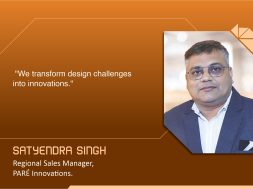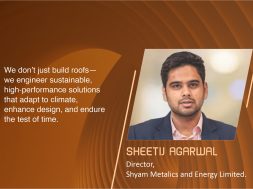Maintaining energy efficiency with smart solutions

Prakasan TP, COO, MEP Business, Sterling & Wilson Pvt Ltd talks about using smart solutions to maintain energy efficiency is the need of the hour and sheds light on his company’s projects.
What measures do you take to ensure optimum energy efficiency in the projects undertaken?
We deploy devices such as smart energy meters/variable frequency drives throughout the project for High Side key equipment and Low Side distribution panels which help us to analyse and understand the energy consumption of any equipment beyond its desired efficiency. These devices generally operate at an optimum frequency based on the demand/load. The demand/load is obtained from the inputs of various sensors installed at multiple locations depending on the equipment to be operated. The standards referred to during the design and engineering are -ECBC Energy Conservation Building Code. ASHRAE Standard 90.1 and 62.1-2016 (American Society of Heating, Refrigerating and Air-Conditioning Engineers), ECBC (Energy Conservation Building Code), GRIHA (Green Rating for Integrated Habitat Assessment).
Moreover, we examine and take estimate of the required energy capacity of the projects and successfully reduce the actual energy requirements for functionality of building with the help of following smart solutions:
Building Automation System (Including set of smart ICT sensors for monitoring & controlling the building services smartly)
Scheduling and sequencing the operation of high side Electrical, Mechanical equipment for load sharing with energy efficiency
How big is it a challenge to perpetuate energy efficiency post the completion of the project?
With the smart solutions, the conventional way of managing the systems are past now. The data generated through such solutions and analytics support the O&M team to monitor and make decisions quickly. This result in achieving efficiency with respect to time and resources. Thus, the challenges arising due to conventional way of management are much reduced.
However, there is a new challenge in terms of developing and inculcating culture among the O&M team. It’s imperative for the team to efficiently utilise the data and analytics for predictive and preventive maintenance.
Can you cite the execution of a project which stood out owing to energy efficiency?
Sterling & Wilson has deployed the smart automation solutions for two projects, which are Jaguar Plant, Manesar, Gujarat, and the Additional building complex of the Supreme Court of India, New Delhi. The smart facility at both the projects has a ‘green building’ rating from GRIHA.
HVAC System comprises conventional and radiant cooling system
- Smart building automation system
- Analytical CCTV surveillance system
- Energy monitoring system
- Physical security system
- Attendance management system
- Visitor management and access control System
The building automation system with control over the HVAC system, maintains wellness of the occupants with optimum indoor air quality, regulate electrical equipment operation for unity power factor, treat, conserve and recycle water.
What according to you would be the focus areas and energy efficient trends in the upcoming decade?
The Indian government, spearheaded by the Bureau of Energy Efficiency (BEE), has launched a series of energy efficiency programs that have grown into an impressive suite of policies and institutions. The adoption of these programs by industry has begun to gather momentum. They include standards and labeling programs for appliances, building codes, and industrial process efficiency targeting. They are expected to culminate into a National Mission on Enhanced Energy Efficiency (NMEEE), which includes innovative programs such as mandatory targets and tradable efficiency credits (like a cap and trade), capacity building and financial and risk support.
The government has enhanced its initiatives in the following areas that are likely to become energy efficient trends in the future:
- Electric vehicle and electric charging stations
- Smart lights for highways with solar power and occupancy sensor
- Smart homes and smart offices
- Traditional lights exchanged with LED lights in streets
- Solar power corridor for railways.
Cookie Consent
We use cookies to personalize your experience. By continuing to visit this website you agree to our Terms & Conditions, Privacy Policy and Cookie Policy.









